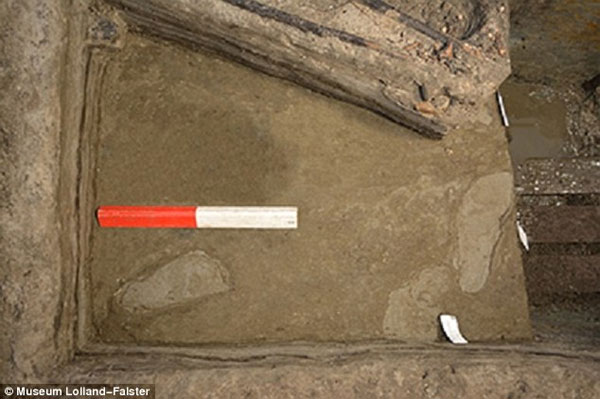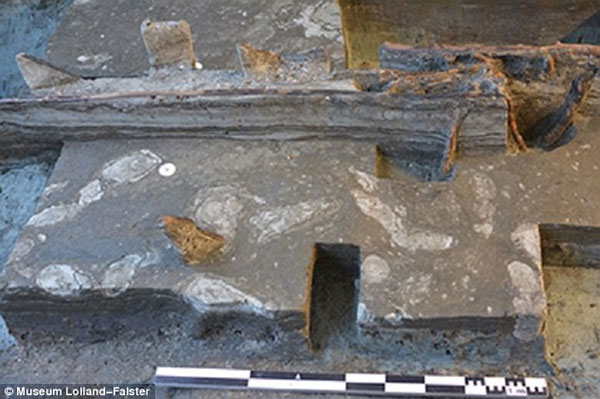Discovering footprints from the Stone Age 5000 years ago
The Daily Mail reported that archaeologists while conducting an excavation at the Femern Belt Tunnel in the Danish island of Lolland have discovered intact footprints of people from the Stone Age 5000. last year.
These stone-era footprints are believed to belong to at least two fishermen, leaving their footprints while trying to strengthen the fish fence from the nearby river branch, amid extreme bad weather conditions caused by the photo. The effect of the big storm.

Footprints from the Stone Age are found in the Danish island of Lolland.(Daily Mail photo)
Archaeologist Terje Srafseth (Lolland Falster Museum, Denmark) said the discovery of this Stone Age seems unbelievable. Previously, archaeologists found only historical evidence of human discarded objects, but now they find traces of the human body. He added that these were the first human footprints ever found in Danish archaeological areas.
The archaeological team conducted a survey of the sediments and minerals in the sand in the area to find footprints and obtained results showing that these footprints belonged to people from the Stone Age 5000 years ago. Footprints appear along the 1m-long fishing system built by the nearby community. Based on the location and depth of these footprints, archaeologists have hypothesized that the fish fence was swept away by the storm and then buried by sand. Besides, the size of footprints suggests that bad weather conditions make these fishermen wade into the water to strengthen the fishing system.

The fish-posting system plays an important role in the life of the Stone Age people.(Daily Mail photo)
Many studies show that people in the Stone Age often repaired or even renovated the fish barrier system to make the most of the flow of river water. The footprints further confirmed the importance of the fish-posting system, the main feeding tool of those living along the river at that time.
Currently, the archaeological team of the Lolland Falster Museum is still conducting more in-depth archeology with the hope of discovering more new evidence of people's daily activities thousands of years ago. .
Reference: Daily Mail
- Discovering extremely rare footprints of ancient people 14,000 years ago
- Discover fossil giant footprints in Western China
- Dak Nong found two sets of rock colonies dating back more than 3,000 years
- Found 400 human footprints intact 19,000 years ago
- Found footprints of people who lived 800,000 years ago
- Discovered human footprints buried in the sand 80,000 years
- Discovering the footprints of the Snowman in Nepal
- Discover ancient footprints and mysterious flying objects
- Rumored footprints from demons around the world
- Discovering stone carvings of 2.6 million years old
- Discovering the dancer's dancer
- Human footprints date back to 25,000 years in Mexico
 Discovered an ancient centipede fossil 99 million years old
Discovered an ancient centipede fossil 99 million years old Discovered bat-like dinosaurs in China
Discovered bat-like dinosaurs in China Discovered a 200-year-old bronze cannon of the coast
Discovered a 200-year-old bronze cannon of the coast Discover 305 million-year-old spider fossils
Discover 305 million-year-old spider fossils